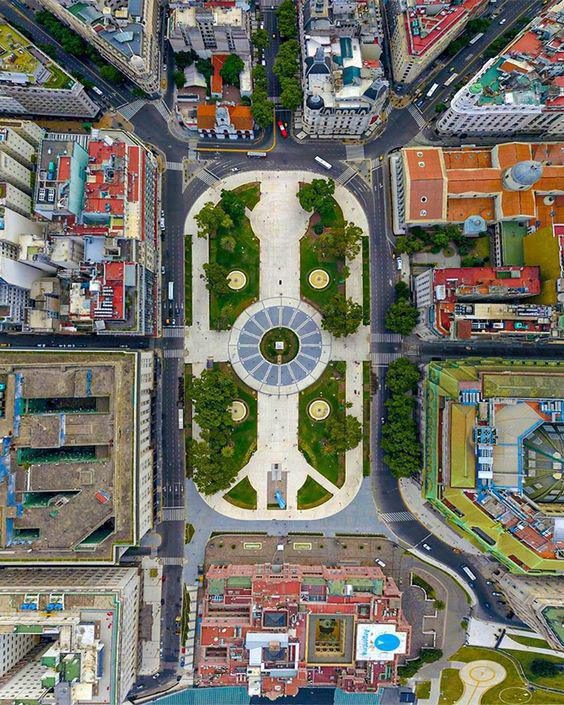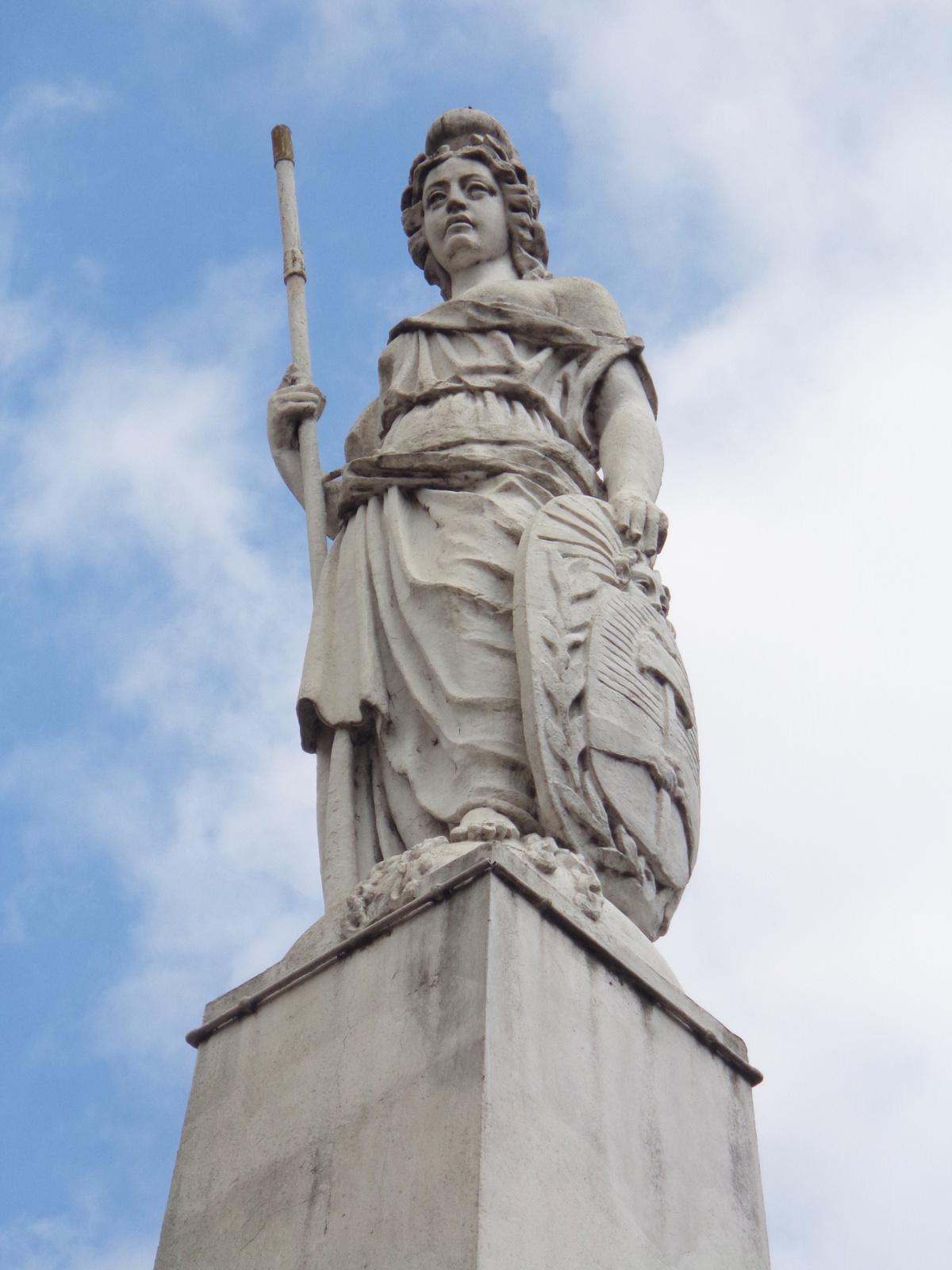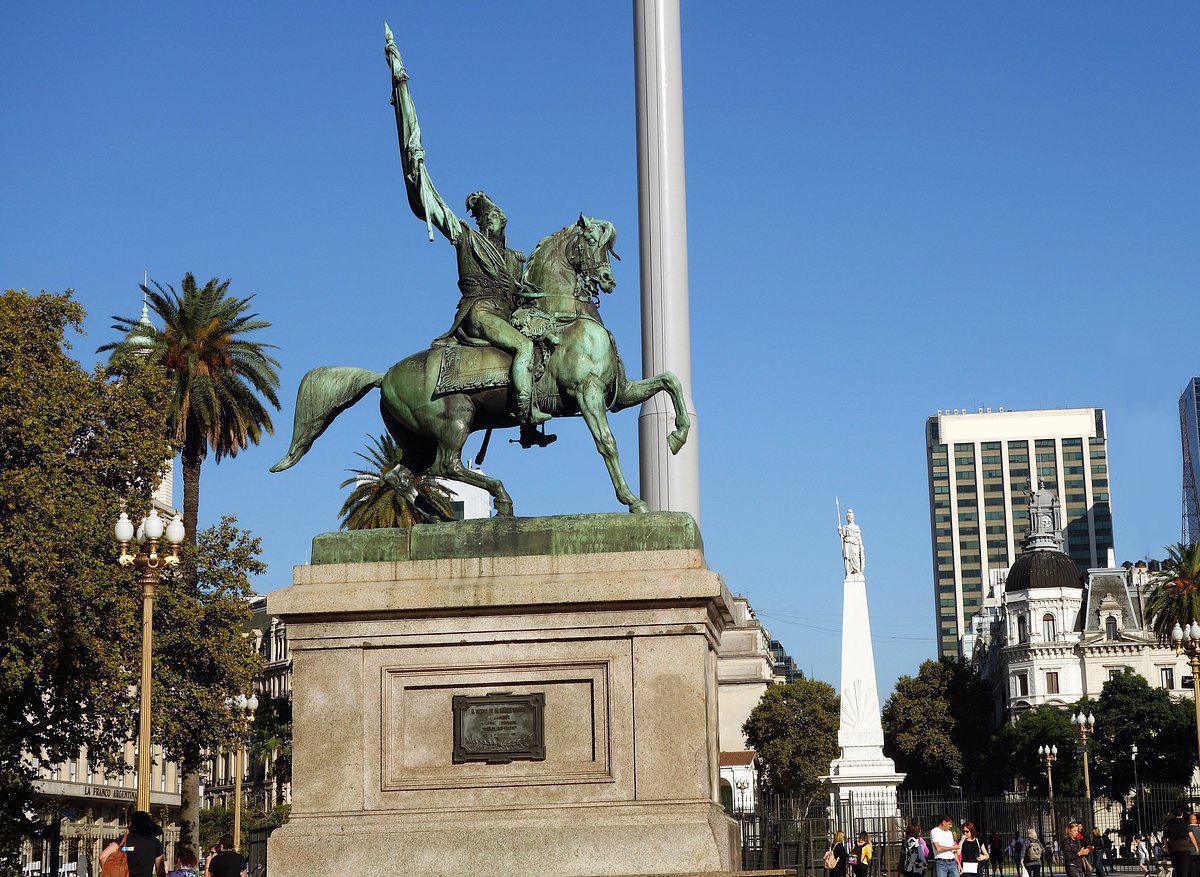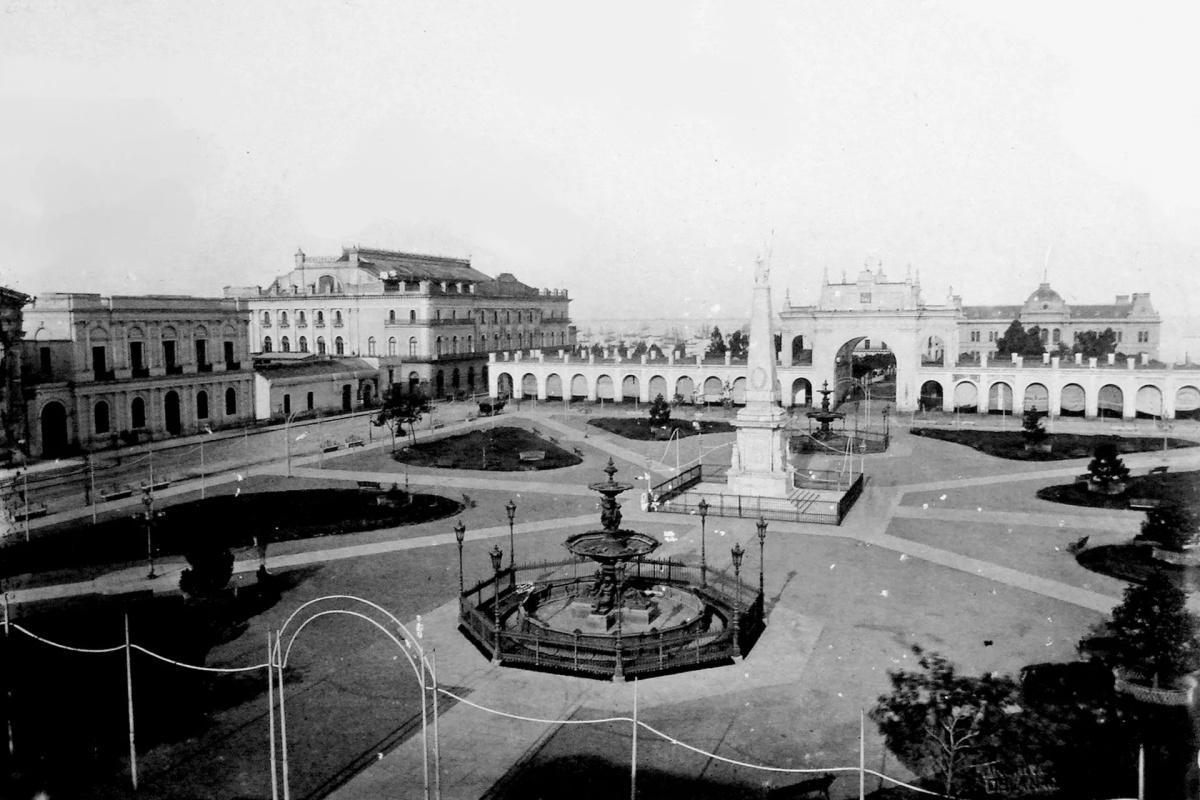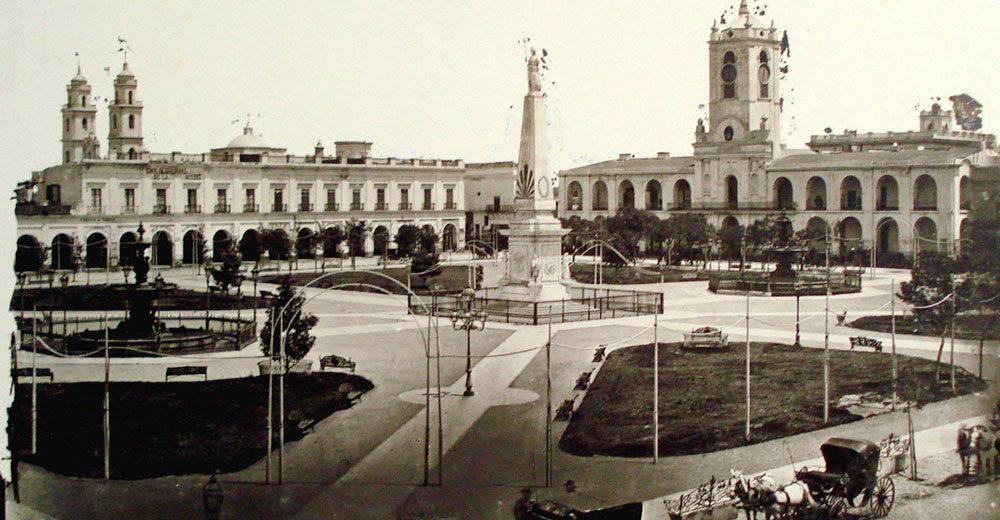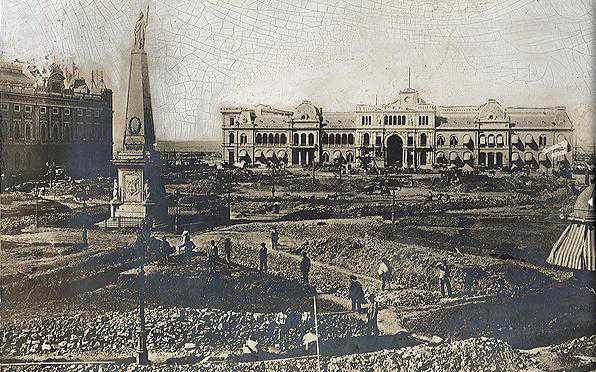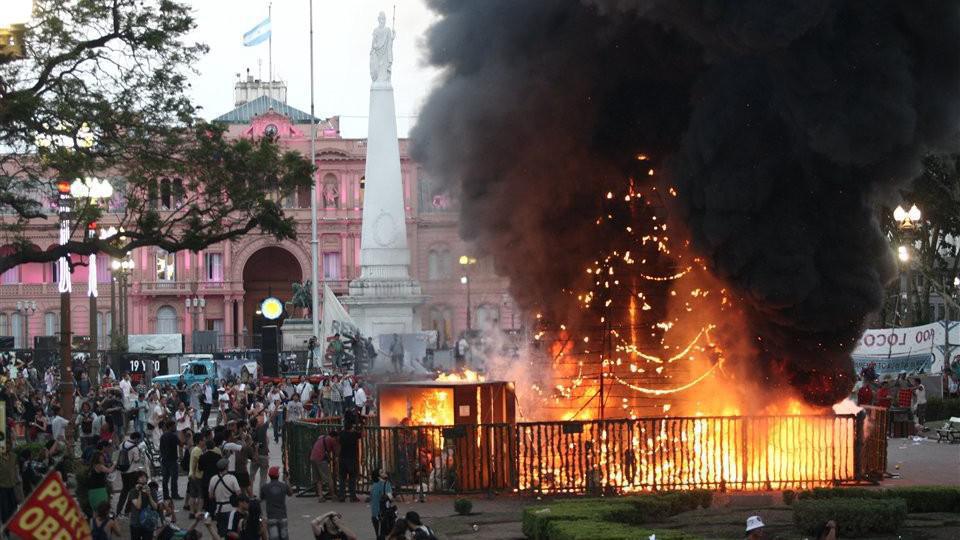
Comentarios
R2-P4. Paza de Mayo
avenida de mayo 1
Breve Historia
Short History
La Plaza de Mayo es la más antigua de Buenos Aires y es el escenario por excelencia de todos los acontecimientos políticos más importantes de la historia argentina, a excepción de la Declaración de la Independencia.
The Plaza de Mayo is the oldest square in Buenos Aires and is the scene par excellence of all the most important political events in Argentine history, with the exception of the Declaration of Independence.
Su nombre es un homenaje a la Revolución del 25 de Mayo de 1810, que ocurrió en esta misma plaza y que dio inicio a la gesta de la independencia argentina, a partir de la cual se comenzó a elegir una forma de gobierno propia.
Its name is a tribute to the Revolution of May 25, 1810, which took place in this same square and which started the Argentinean Independence, from which Argentina began to choose its own form of government.
Es también el lugar donde fue fundada por segunda vez la ciudad, el 11 de junio de 1580 por Don Juan de Garay, con el nombre de Ciudad de la Santísima Trinidad y Puerto de Santa María del Buen Ayre y en ese tiemp era llamada Plaza de la Victoria.
It is also the place where the city was founded for the second time, on June 11, 1580 by Don Juan de Garay, with the name of Ciudad de la Santísima Trinidad y Puerto de Santa María del Buen Ayre and at that time it was called Plaza de la Victoria.
Alrededor de esta plaza fue creciendo la primitiva aldea, hasta que se convirtiera en el centro político del país.
The primitive village grew around this square until it became the political center of the country.
Bordeando la Plaza de Mayo se ubican varios edificios históricos y de gobierno como el Cabildo, la Catedral Metropolitana, donde ofició misa el Papa Francisco durante más de 20 años, la Casa de Gobierno, conocida también como Casa Rosada, sede del Gobierno Nacional y donde se encuentra el célebre balcón de Perón y Evita, el Palacio del Gobierno de la Ciudad y diversos bancos y ministerios.
Bordering the Plaza de Mayo are several historical and government buildings such as the Cabildo, the Metropolitan Cathedral, where Pope Francis has officiated mass for more than 20 years, the Government House, also known as Casa Rosada, seat of the National Government and where the famous balcony of Perón and Evita is located, the Palace of the Government of the City and several banks and ministries.
Desde 1890, cuando se realizó el primer acto político de masas, cuando se fundó la Unión Cívica, partido político que luego dio origen a la actual Unión Cívica Radical, se ha convertido en escenario de grandes manifestaciones sociales y, a partir de 1977, el lugar de reunión de las Madres de Plaza de Mayo, con el reclamo historico por la aparición de sus hijos secuestrados durante la última dictadura militar.
Since 1890, when the first mass political event was held, when the Unión Cívica, the political party that later gave rise to the current Unión Cívica Radical, was founded, it has become the scene of major social demonstrations and, since 1977, the meeting place of the Mothers of Plaza de Mayo, with the historic demand for the appearance of their children kidnapped during the last military dictatorship.
En el centro de la plaza se encuentra la Pirámide de Mayo, monumento construido en 1811 para celebrar el centenario de la Revolución y que fuera reformado en 1856 por el artista y arquitecto Prilidiano Pueyrredón.
In the center of the square is the Pirámide de Mayo, a monument built in 1811 to celebrate the centenary of the Revolution and renovated in 1856 by the artist and architect Prilidiano Pueyrredón.
Entre la Pirámide de Mayo y la Casa de Gobierno se ubica el monumento a Manuel Belgrano, creador de la bandera nacional.
The monument to Manuel Belgrano, creator of the national flag, is located between the Pirámide de Mayo and the Government House.
1876 La vieja Recova cruza la Plaza de Mayo, poco antes de ser demolida. A su izquierda, el antiguo Teatro Colón.
1876 The old Recova crosses Plaza de Mayo, just before it was demolished. To its left, the old Colón Theater.
Dato Curioso
Interesting Fact
En la época colonial en la Plaza de Mayo se hacían corridas de toros y esto fue hasta poco después de la Revolución de Mayo en 1810.
In colonial times, bullfights were held in the Plaza de Mayo until shortly after the May Revolution in 1810.
Hasta mediados del siglo XIX, los habitantes de la ciudad no se animaban a acercarse al baldío vecino a la Catedral, porque creían que por ahí vagaban los espíritus, era lo que se conocía como el “Hueco de las Ánimas”, descampado que desapareció con la construcción del primer Teatro Colón, inaugurado en 1857.
Until the middle of the XIX century, the inhabitants of the city did not dare to go near the wasteland next to the Cathedral, because they believed that spirits wandered there, it was known as the "Hueco de las Ánimas", a wasteland that disappeared with the construction of the first Colón Theater, inaugurated in 1857.
En el año 1900, Carlos Thays parquizó a la Plaza de Mayo con palmeras traídas de Río de Janeiro.
In 1900, Carlos Thays landscaped the Plaza de Mayo with palm trees brought from Rio de Janeiro.
Las palmeras son de la especie Phoenix Canariensis, llegaron desde Río de Janeiro a fines del siglo XIX, cuando se quitaron los paraísos para reemplazarlos por esta nueva especie, se desató una polémica entre quienes opinaban que las palmeras no iban a adaptarse al clima de Buenos Aires, y los que decían lo contrario. Pasaron sin embargo más de ciento diez años, y todavía están allí.
The palms are of the Phoenix Canariensis species, they arrived from Rio de Janeiro at the end of the XIX century, when the paraísos were removed to be replaced by this new species, a controversy broke out between those who thought that the palms were not going to adapt to the climate of Buenos Aires, and those who said the opposite. However, more than one hundred and ten years have passed, and they are still there.
Escenario de la História
Historical Scenario
On December 18, 2001, a strong political and institutional crisis took the people to the streets to express their disagreement with the economic and political course defined at that time by the "Alianza" government.

